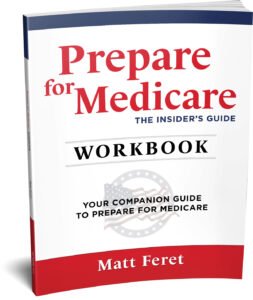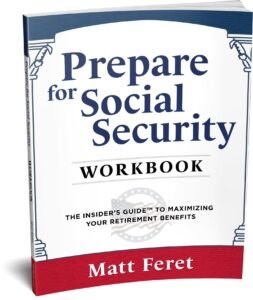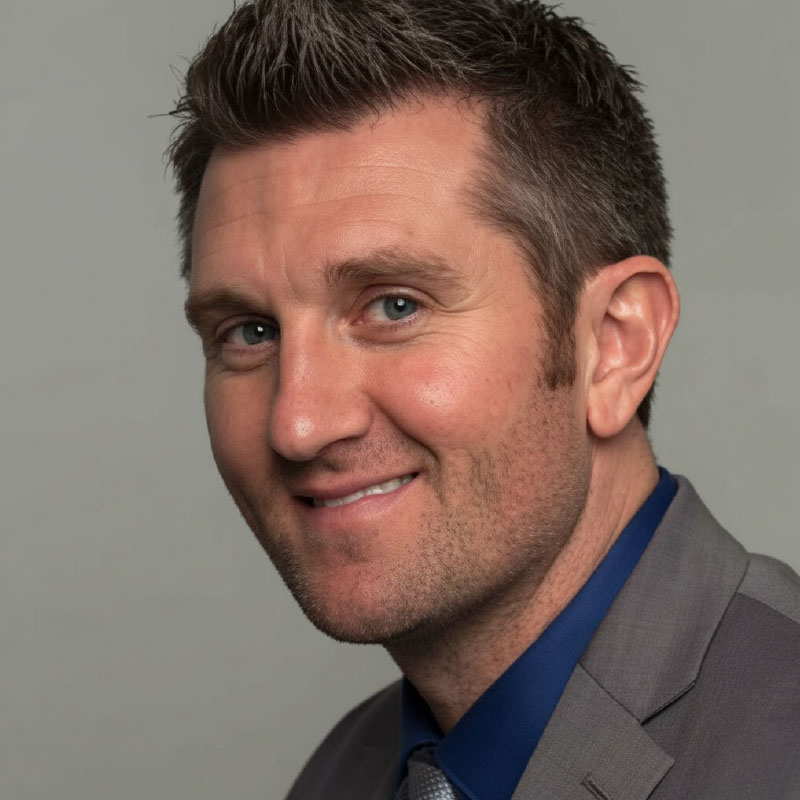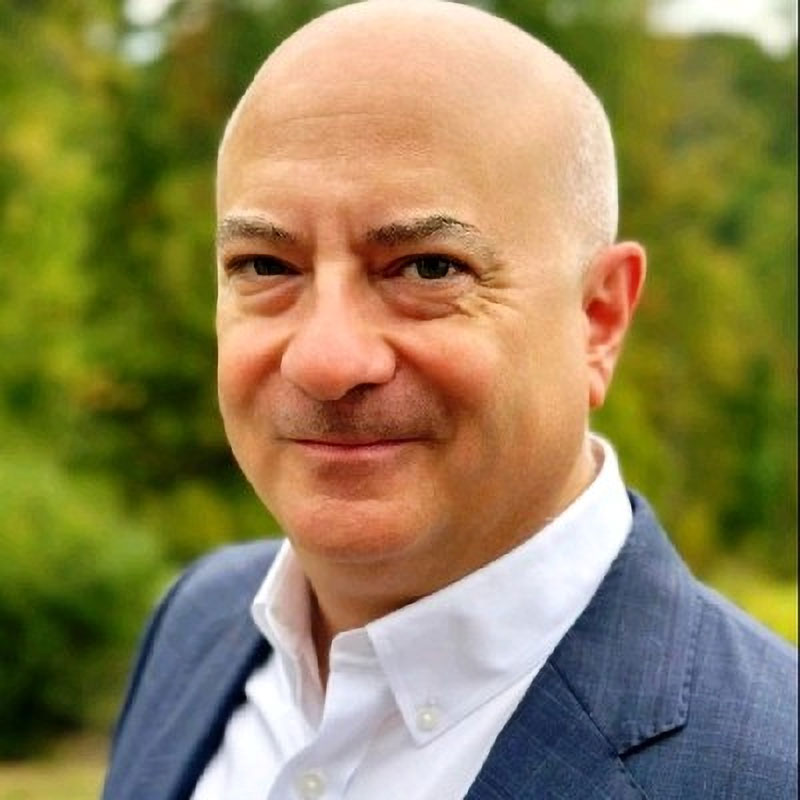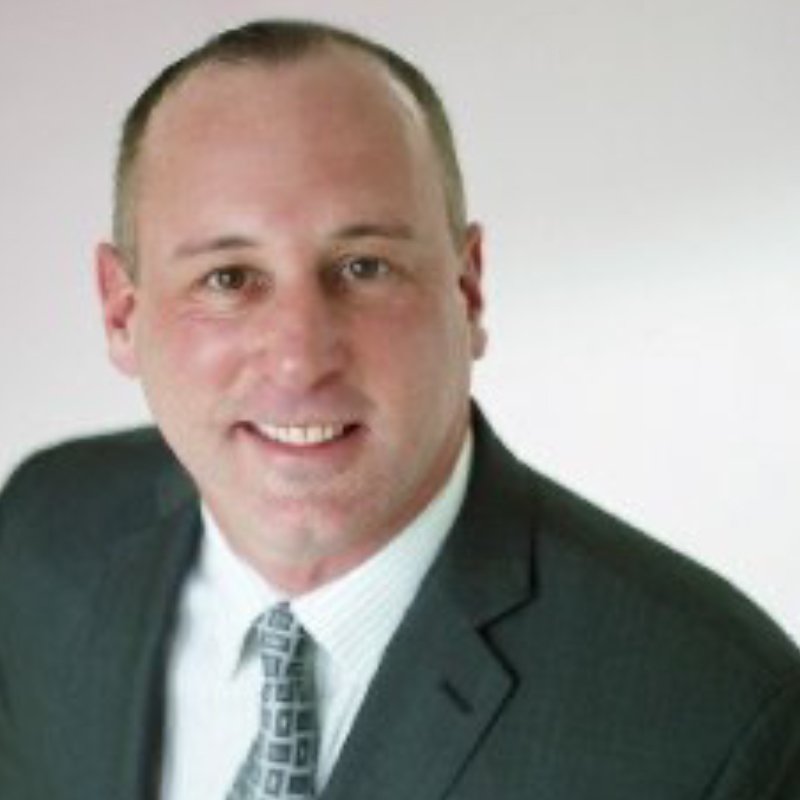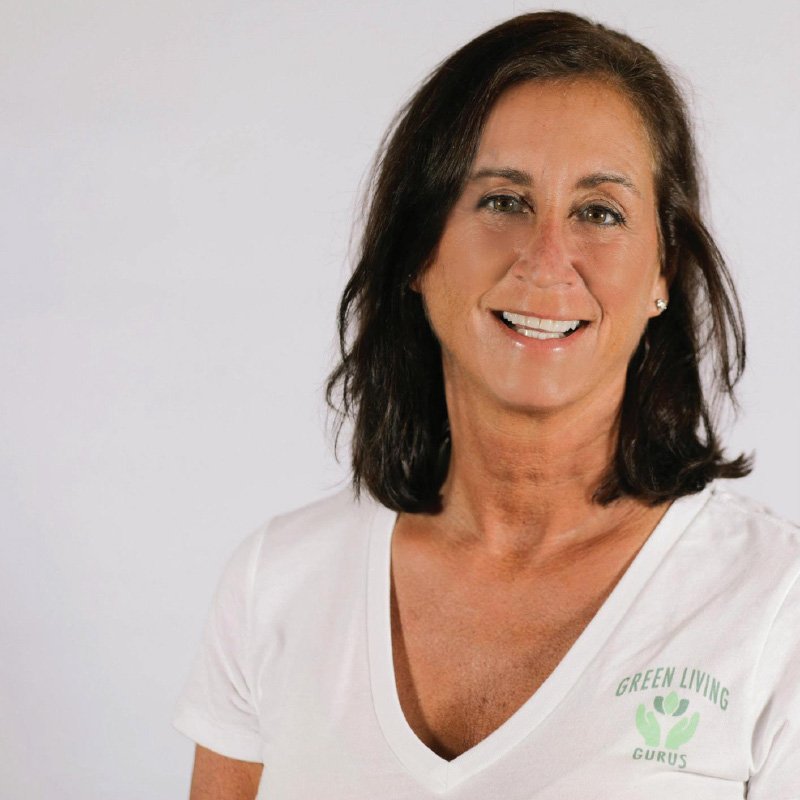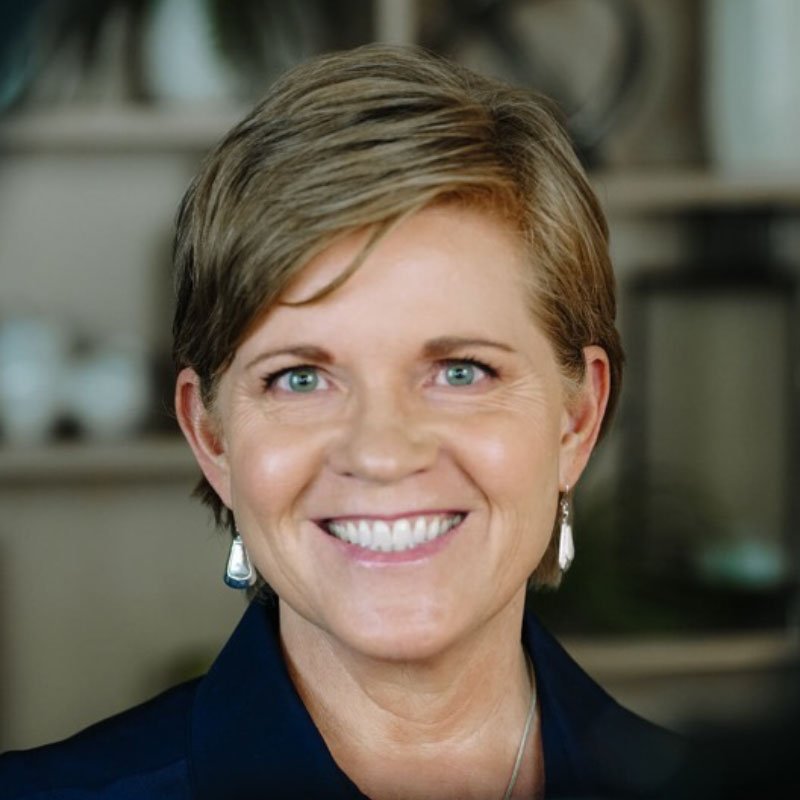#056
Share This:
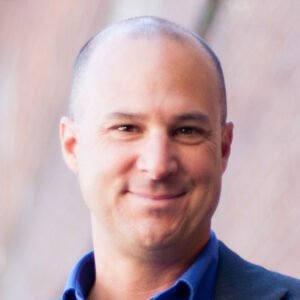
In this episode of The Matt Feret Show, I interview financial consultant John Ensley. He shares his philosophy on using life insurance as a financial planning tool and how to “bank on yourself,” a concept which involves using whole life insurance policies as a way to save, borrow, and invest. We discuss the benefits of these policies, such as high cash value, low commission, and dividend payments, and how they can be used to achieve financial objectives without taking unnecessary risks. John also addresses common detractors of this approach, such as the "buy term and invest the difference" strategy, and emphasizes the importance of seeking out advisors who are knowledgeable about these types of policies. We talk about the potential use of life insurance policies in long-term care planning and the concept of "family banking," where multiple generations pool their assets and savings to create a financing resource within the family. Overall, John highlights the versatility and benefits of using life insurance as a tool for financial planning.
Listen to the episode on Apple Podcasts, Spotify, Deezer, Podcast Addict, Stitcher, Google Podcasts, Amazon Music, Alexa Flash Briefing, iHeart, Acast or on your favorite podcast platform. You can watch the interview on YouTube here.
Brought to you by Prepare for Medicare – The Insider’s Guide book series. Sign up for the Prepare for Medicare Newsletter, an exclusive subscription-only newsletter that delivers the inside scoop to help you stay up-to-date with your Medicare insurance coverage, highlight Medicare news you can use, and reminders for important dates throughout the year. When you sign up, you’ll immediately gain access to seven FREE Medicare checklists.
Quotes:
“I think taking control of the banking equation is Financial Planning 201, and that is how can we more efficiently save, borrow and invest and using a platform with a properly structured whole life insurance contract is one very good way to do that.”
“Way back when I had probably the same attitude a lot of people do. I hated life insurance. Why do I want to be worth more dead than alive? That kind of thing. And it took a paradigm shift in just getting educated for me to understand how valuable that death benefit actually is when we really consider what it means to a spouse or to children or those kinds of things if something happens to us.”
“I think what you're looking for is an advisor who's open to that conversation. A red flag would be advisors that are going to come back and say, oh no, stay away from that, bank on yourself is a scam. They don't even want to talk about it. You should be able to have a conversation.”
#056
Selected Link from the Episode:
Host’s Links:
All Things Medicare: prepareformedicare.com
Decoding Social Security: prepareforsocialsecurity.com
My Written Works on Amazon: www.amazon.com/stores/Matt-Feret/author/B09FM3L4WW
The Matt Feret Show's YouTube: www.youtube.com/@themattferetshow
Network with me on LinkedIn: http://www.linkedin.com/in/mattferet
Follow me on X: twitter.com/feret_matt
See behind the scenes on Instagram: www.instagram.com/matt_feret/
Join our community on Facebook: www.facebook.com/themattferetshow/
Guest’s Links:
LinkedIn: https://www.linkedin.com/in/johnensley/
J-Ensley Financial: https://jensley.com/
Full Show Transcript:
Announcer:
This episode of The Matt Feret Show is brought to you by the Brickhouse Agency. Brickhouse is a boutique independent health insurance agency that focuses on finding the right Medicare coverage for folks across the country. Matt's wife, Niki, is the heart behind Brickhouse. She's great at making confusing things clear and is passionate about helping people find a Medicare insurance policy that suits their individual needs. To schedule a free one-on-one appointment with Niki or a member of her team, head on over to brickhouseagency.com or simply call (844-844-6565), and someone will help you schedule a phone call or a Zoom meeting. The consultation is free because the insurance companies pay Brickhouse, not you. There's never any pressure or obligation to enroll. Your clearer, simpler Medicare journey is just a call or click away. brickhouseagency.com. Not affiliated with or endorsed by the government or federal Medicare program contacting Brickhouse Agency LLC will direct you to a licensed insurance agent.
Matt Feret:
Hello everyone. This is Matt Feret, author of Prepare for Medicare and Prepare for Social Security Insiders, guidebooks, and online course training series. Welcome to another episode of The Matt Feret Show, where I interview insiders and experts to help light a path to successful living in midlife retirement and beyond.
Matt Feret:
John, welcome to the show.
John Ensley:
Thanks, Matt. Super happy to be here.
Matt Feret:
I'm glad you are. Tell everybody what you do, how long you've been doing it, and how you help people.
John Ensley:
Absolutely, I'd be happy to. So I am a chartered financial consultant, which puts me in the financial planning space, and I would describe my practice as life insurance centric financial planning, and basically I help people achieve their financial objectives without taking unnecessary risks. And I started my practice in 2012, so I'm a little over 11 years doing this now. Awesome. Thank you. And I love what I do.
Matt Feret:
I'm glad that's the most important thing, isn't it?
John Ensley:
Absolutely. I joke all the time that I think I'll just keep doing this till they nail the coffin shut.
Matt Feret:
Same, the R word is not one in your vocabulary. The retirement.
John Ensley:
Yeah. Not in the conventional sense of the word, for sure.
Matt Feret:
Same here. So tell me, what's your approach? You've been doing this for a while now, what's your approach to help people and how are you different than, let's just say the garden variety financial consultant planner? What's your approach?
John Ensley:
Absolutely. So what's called a bank on yourself professional. So I focus on a concept that works around life insurance products as kind of the centerpiece of the financial planning scenario. And so I think that it's a little different in that people I think need to understand where life insurance products fit. And I have a pretty strong belief that just about every family should have life insurance mixed in somewhere. Not that it's the answer to everything, but it should be a component of a holistic financial plan. So that's kind of the approach I take and I find a lot of my time is spent really educating. There's a lot of marketing messages out there that are hard to sort through. So the education piece I think is super important just to help people critically think and analyze some of these topics and sort through what's marketing messages and what's real intelligence.
Matt Feret:
Well, let's talk about one of those marketing messages that I hear all the time because I will get in the car and I don't know, I'd say a third of the time I throw on sports talk. And man, if you want to hear some ads for male wellness clinics in air quotes and life insurance, just turn on sports talk radio. So what are those guys, you don't need to name names, but what are those guys pitching and how does that kind of factor in and is that what we're talking about here? Are we going a little more advanced, I'm guessing?
John Ensley:
Yeah, I think we're going quite a bit more advanced. I always share a story that you're familiar with, Thomas Edison, the inventor of the light bulb, right? American hero and icon. And so the story I always share is why in the world in 1903 was Thomas Edison electrocuting live animals on camera, right? That's such a weird thing to do for-
Matt Feret:
I didn't know he did that. Now I do.
John Ensley:
There you go. Well, here's the story. He and a guy named Nicola Tesla were in a head-to-head battle over whether direct, current or alternating current power would go into the Niagara Power Station. So it was a marketing message. He was trying to prove that AC power was too dangerous to use so that he could sell his stuff basically. And I think that's the part with marketing messages we always have to remember is they're selling something. And so one of the tactics in marketing is to kill the competition. And so they tend to bash things that they don't like and prop up the things that they do. And there's nothing wrong with that. That's part of life. People are going to do that when they're trying to get your attention. So I think what I'm saying is it's so important to think critically to be able to put the marketing messages aside and actually do some analysis.
I mean, realistically, AC power is obviously not too unsafe to use. The whole world works on it now because Tesla won that debate, but there's still a thread of truth to it. Grab ahold of a couple of one 10 wires and certainly it can be dangerous, but you have to sort through things logically and analyze numbers and be super clear about what you want and how does all this relate to where you want to go? And that's the process I really try to help folks walk through is where do I want to get and how can I get there in the least risky, most efficient manner? And some of these tools are useful for that. So I guess my message is just kind of push the marketing messages aside and think for yourself.
Matt Feret:
Okay, so this concept of life insurance being a foundation and various forms of life insurance being a foundation to a financial plan, not only in your twenties and thirties, maybe you're having kids, but also later on in life. And I have to imagine those types of products change over time. I think we've all heard about term insurance. It's pretty self-explanatory, right? You have a couple of kids, maybe you've got some college bills in their future. You don't want to leave anybody high and dry, so you go basically rent insurance, you rent a 20 or a three year term. It's really competitive rates and it's pretty easy. I need a million bucks. You pay a premium, you pass some medical underwriting, you're done. What are the other types of life insurance above and beyond that? Could you explain beyond the, I guess I'll call it vanilla term, which serves its purpose, right? They're low cost. Sure, absolutely. They're covering for a lot of years and it's a foundation. What are the more advanced versions of life insurance from term?
John Ensley:
Yeah, great question Matt. So as you mentioned, term is the one everyone is familiar with. Pretty much the other side of the life insurance coin is permanent insurance or cash value insurance, and there's a number of different varieties of that. What I tend to focus on are what I refer to as high cash value, low commission dividend, paying whole life insurance contracts. That's what I tend to focus on in my practice. I know that's a mouthful.
Matt Feret:
I was going to say, I just say that is a mouthful. Can you slow down? Say that again and then explain to me what the heck that is.
John Ensley:
Yeah, for sure. So high cash value. So these are policies that are accumulating large amounts of cash value relatively quickly, low commission. So because of the way policies that I use are designed, we are reducing the commission to the agent substantially. So low commission, which is a-
Matt Feret:
Benefit to your premium to the purchaser's premium.
John Ensley:
Absolutely. So if the portion of the premium that pays the agent is reduced by as much as 70%, then of course that 70% is ending up in the cash value of the client at the end of the day. So yes, absolutely beneficial to the policy owner. And then dividend paying, right? So mutual insurance companies are paying dividends back to their policy owners. So we want to use mutual companies. Let's see, high cash value, low commission dividend paying whole life. So we're using a whole life insurance contract as opposed to some of the other permanent life insurance contracts out there. Universal life index, universal life, things like that.
Matt Feret:
Okay.
John Ensley:
Did I unpack that well enough?
Matt Feret:
Yeah, you did. When you say permanent life and whole life, those seem almost synonymous to me. I don't know anything about life insurance. If it's permanent, it never goes away. And if it's whole then it Kohls covers my whole life, but that's probably not
John Ensley:
True whole life.
Matt Feret:
Oh, it does.
John Ensley:
Alright. It does cover your whole life. The only assumption there is that you are paying your premiums.
Matt Feret:
Fair enough. Okay, so we're past financial planning 101, which is you got to try to max out your 401k if you can afford it, at least get the company match. If you can contribute to an IRA, do that, buy your term life insurance to make sure that if something catastrophic happens, your family, your mortgage, your children have something there. Correct. What's 201? What's the 201 level course here in terms of life insurance? And then if there's a 301 and a 401, we'll go there if you don't mind.
John Ensley:
Absolutely. So 201 to me is what I would call the banking equation, and that's where you hear these terms about life insurance. I mentioned bank on yourself. That's one of the terms. Infinite banking. Cashflow banking. There's a number of different philosophies that kind of work around using permanent or cash value life insurance. And I think the reason for the banking term is what I call the banking equation. And the banking equation is saving, borrowing and investing. We all are involved in those three things. We just do it in a myriad of different ways. So from a bank on yourself standpoint, what I'm using are the unique features of a properly structured whole life insurance contract to create a system for saving, borrowing, and investing. And so we can take things to the next level using this system that happens to be more efficient in many ways than the conventional system, particularly on the borrowing and investing side of it.
So in a nutshell, that's often the way I like to explain it in that we're taking control of the banking function. So I totally agree with what you just said. Saving is the first step to any financial planning. We have to be having an income and putting it away and then building up the other retirement plans. There's nothing wrong with those. Absolutely. We want to build all these things. Although I would make one note on the retirement plan, and that is let's not forget the primary purpose of a retirement plan. They were designed, and I'm talking about 401Ks and IRAs and Roth IRAs and this, they were designed to supplement pension plans and social security. That's what they were designed to do. And so a pension plan produces an income that will last you in your retirement years. And I think sometimes we lose sight that the purpose of those retirement plans is to produce an income. Now we want to get to that point or design the whole thing to reach that point where it produces an income we can live on like a pension would obviously today we're not supplementing pensions, we're supplanting pensions. But that's a whole ‘nother conversation. So I think taking control of the banking equation is the 201, and that is how can we more efficiently save, borrow and invest and using a platform with a properly structured whole life insurance contract is one very good way to do that.
Matt Feret:
Okay. Tell me a story. Give me an example. You can change the names of the guilty, but tell me a story about who you've worked with on this or kind of a profile or an age or an income that would make it to where maybe it fits me, maybe it doesn't.
John Ensley:
Yeah, absolutely. I can share a few. So I'll start with one that's one of my favorites. A young guy, military and had spent some time overseas, saved up quite a bit of money and was now back in the US when I met him. And so we were able to structure a policy for him, a whole life policy where he was able to drop a large lump sum in on the front end. He had savings, he had cash savings from when he had been overseas. And so he did that and within about two weeks, I'm going to say from when the policy was issued, he turned around and took a policy loan against that contract and paid off a car. He had bought a Tesla and he paid off this Tesla and then made the same payments that he was making on the Tesla. He made back to the policy loan until it was paid off in three or four years.
And so today he's still using his policy except now he's buying real estate, he's buying rentals. I think he's on his third one now, and he's using these policy loans in this policy that he set up to facilitate financing these real estate. So it's a great example of someone who was able to save and then borrow against to eliminate some debt basically in a much more efficient manner. And then ultimately invest. He's using the same platform as saving, investing and borrowing. And so that's really the story that I try to share. That's what we're trying to do is save, borrow, and invest. So I have another example I can give you if you'd like.
Matt Feret:
I'd love it.
John Ensley:
Okay, perfect. So another client who took different approach, and so this gentleman's in his late fifties, he's been contributing to his wife, his adult son, his adult son's wife. Family has several policies that they've built and they've all been contributing for probably 10 years or more. So he has now started investing in real estate. So he was using the policy as a way to save, they've borrowed it to start a business. They've borrowed from it to purchase vehicles. They've done a number of couple of their own homes, but now they are investing in real estate syndications and they're using the funds from the policy to facilitate those real estate investments and continuing to build their wealth. And so that's another great example where you don't have to do it all at once. The first example, it can be done over time and you build it up.
And I think the big thing with using a whole life policy this way is you're getting multiple jobs out of the same dollar a premium. You're getting this building up of cash value, which is sort of like a savings function. You're getting a death benefit at the end of the day, take the guy with the real estate syndication, the death benefit is sitting out there. If something happens to him, he gets hit by a bus tomorrow and he's only two years into this seven year syndication deal that he's doing, that death benefit comes in and really completes that investment and takes care of his wife and you know what I mean? So you're getting life-
Matt Feret:
Life insurance at the end of the day, right? So yeah-
John Ensley:
It's life insurance. Yeah. Yeah. And way back when I had probably the same attitude a lot of people do. I hated life insurance. Why do I want to be worth more dead than alive? That kind of thing. And it took a paradigm shift in just getting educated for me to understand how valuable that death benefit actually is when we really consider what it means to a spouse or to children or those kinds of things if something happens to us.
Matt Feret:
So you, it's a savings plan. Why do most people not think of life insurance as a savings plan? And you were explaining how someone put a lump sum in for whatever reason, savings or an inheritance or whatever, and then borrowed against it or borrowed it out of the policy. To me, that doesn't seem, how does that happen? How does that work? So if I'm paying a big premium for a big life insurance, how do I take the same thing I just paid him and take it back again and what are the tax implications? Do I get fees? Do I get what happens? What are the consequences of putting money in something than having it and taking it right back out?
John Ensley:
Absolutely. So I'm glad you asked that question, Matt, because the way policy loans work is part of what makes this whole philosophy unique. So I mentioned we have a mutual life insurance company who pays a dividend on to policy owners, so that's a component. Now, life insurance companies are highly regulated. They have to invest in very high quality investments. So the state regulators make sure that they can meet their future obligations by essentially limiting what they can invest in. Well, one of the things they can invest in, one of the most solid things they can invest in are policy loans to their own policy owners. So essentially what a mutual insurance company do will do is they will look at your policy and say, okay, you have X amount of cash value on that policy. That is the limit of what we will loan you.
The death benefit is effectively the collateral. And so what this does for us as a policy owner is when we borrow, we're not borrowing the money out of our policy that we just put in it. We're borrowing from the insurance company, from their general fund that's being invested. We're an investment for them and we do pay some interest to them for that loan. It's usually simple interest and it's applied on an annual basis. So there's some advantages to that side of it, which can affect some very low rates, very competitive, especially now. And so when we borrow from the insurance company, essentially it's a non-recourse loan. The insurance company's using the death benefit as collateral, which means I'm in complete control over how I pay this loan back. I can pay it back over 10 years, I can pay it back over two years. I can not make payments for a while.
I can make payments for a while. I'm in complete control of that process. So for me as an advisor, I spend a lot of time educating clients on how, what I call being an honest banker, right? You have to handle your own loan situation the way you would any other type of bank or financial institution. You have to treat it with the same respect and responsibility. That's super important. So no, there's no additional fees other than the interest that you pay to the insurance company for the loan, which will be very competitive, much lower than what commercial rates are. Again, especially now that rates are up a bit. So I can give you an
Matt Feret:
Are they lower than a 401k loan comparable.
John Ensley:
So it's that simple interest part that makes the big difference. So it can be anywhere from two to 5% depending on the pace of your repayment program. So if you're paying it back more quickly, you're going to reduce that effective annual rate because they're only applying that simple rate every year. So it's not compounded. So that really makes a big difference. I mean, I can give you another really good example of a gentleman that I worked with recently, 70 years old, and he shared with me on a call that he had over $50,000 in credit card debt, and you could just hear the hopelessness in his voice. He had no idea how he was going to get out from under this burden. And so when I did the analysis and I'm looking at over 10 years, those credit cards, he was looking at what the rates he was paying about $122,000 just in interest. If he didn't get rid of it in 10 years, it was mind boggling, right?
Matt Feret:
Yeah.
John Ensley:
So we put a program together for him where fortunately he had been funding a whole life policy and he had about 35,000 in there, and we were able to take a policy loan pay off six of those cards. So we essentially moved those balances into the policy. We took the same payment that he was making, the minimum payments he was making to the credit cards, and we directed those into the policy. And actually it worked a little bit for him. He was a little strapped and we put about 300 back in his budget to give him some room and the rest of it towards the policy loan. And so about a year later, we paid off the rest of the credit cards with the policy. And so within, I think it was 14 months, he had all the creditors paid off and it would take about four more years to finish paying the policy loan off using the exact same payments he was already making. So we didn't have to do anything crazy with his budget. He still could basically making the same payments he was making. But here's the important part is his total interest cost over the 5.25 years, whatever that figure was, his total interest cost was less than $8,000. So from 122,000 and no hope to get rid of it to everything paid off in just over five years and $8,000 of interest, it was a tremendous savings for him.
Matt Feret:
Tremendous savings mean tremendous. You can extrapolate that age 70 and age 90, just do the 20 years, the one 20 in interest versus eight. I mean, wow. Talk about free cash flow over those 20 years.
John Ensley:
Absolutely. And so it's a combination with a policy loan of very, the effective interest rate on that scenario was about 2.5% a year, right? That's the effective rate in down compared
Matt Feret:
To the credit card
John Ensley:
Company compared to 28. And it was just insane. So of course he was super, super happy.
Matt Feret:
Sorry about that. Let me mark that clip in my cough. If it makes it on, it makes it on everybody coughs.
John Ensley:
Yeah, exactly.
Matt Feret:
So let me try to simplify it. Not that smart. If I buy a, let's just say, I don't know, I got an inheritance or I saved up a bunch of money and I got a hundred thousand bucks and I come to you and I want a lump sum and I want to do this and I want to give a lump sum payment upfront, and so I can buy a $500,000 value death benefit on this type of thing and have somewhere close to a hundred thousand dollars in something sitting in cash or easily convertible to cash in the same account, and then I can go borrow 90 a thousand dollars and go use that for something else at a very low interest rate. And that's okay with the life insurance company because when I die, not if, right? There's the old life insurance joke, it's the only policy you're guaranteed to use is life insurance. They're fine with the low interest rate, they're fine with you taking that money out because they know at some point you've got a $500,000 death benefit and if you don't pay it back, they're going to take the 90 grand out of the 500,000. Right? Is that pretty much it
John Ensley:
In a nutshell? You've got it. 90 percent's a pretty good ratio. Most companies are going to loan about 90% of the cash value figure. So that's about right. And yeah, I think in a nutshell, you've pretty much got it. The insurance company's happy. And the other thing to think about too is you're borrowing from the insurance company, you're paying an effective rate of two point a half or three or 4% depending on how you pay it down. But remember, they're paying you a dividend every year too. It's based on the performance of the company. Dividends are not guaranteed because they're based on the performance of that mutual company. Most of the companies that I work with anyway have paid out dividends every single year for over a hundred years. So they're not guaranteed, but very consistent can track record.
Matt Feret:
I'd say a hundred years is a good track record.
John Ensley:
Yeah, pretty good track record when you think about World War I and the Great Depression and World War II and all the things that they not only survived, they performed better than expected and paid dividends to their policy owners through those crises. And I know that says a lot,
Matt Feret:
So I don't know if you've got a 301 in there, but let's go to life insurance 301, what's the next level beyond that?
John Ensley:
Well, I think 301 comes later in life when now it's time to retire or whatever the case may be. And so if you've been using your policy as a savings and as a borrowing platform, and as a lot of clients end up going the investing direction using the policy as a platform, I try to stress this all the time. We don't compare a properly structured whole life policy that you're using for bank on yourself. We don't compare that to a retirement plan or to real estate or to some other type of investment. It's the thing we use to facilitate all those things. And so it's not an either or it's, and we're going to build up the equity in this policy and use it for real estate investing or use it for whatever the case may be. So I think 301 then becomes passive income.
How do we then take this that we've built up and turn that into a passive income that we can then use for retirement? So that I think is 301. And so at the end of life, it can be something as simple as taking the built up equity. Let's say we've built up $500,000 of cash value by this time, or 700 or a million or whatever that number is, we can then create a reverse income stream coming out of the policy. And if we structure it right so that we're taking advantages of the unique features of life insurance in terms of you can pull money out of a life insurance policy up to your basis with no tax, we know we can take loans with no tax under current tax law. So what that creates is an opportunity for us to create this reverse income stream from the policy where we can take regular withdrawals up to the basis for let's say 20 years, and we haven't paid any tax. Now we hit the basis point at that point we switched to loans and we stick the same amount, but we're taking it as a loan and this is the only time we're not going to pay a loan back because we're expecting to die essentially before that policy runs out of money.
Matt Feret:
Kidding, I knew what you were going to say. Because we're expecting to die. I think we
John Ensley:
All expect, so we're going to plot those income-
Matt Feret:
Income strategy there becomes you've got a cash value and you've got a death benefit, but you're basically taking money out cash that you've got in there without thinking about a repayment plan because-
John Ensley:
At that point, yes, you're going-
Matt Feret:
To get it anyway.
John Ensley:
Yeah, exactly. You're really, what you're doing is once you switch to loans, you're letting the death benefit pay the loan at the end sense. And so you're just using it as income. You're going to let the death benefit come in and take care of it. And if we structure it that way, I mean we can create 20, 30 years of income completely tax free under current tax law. So there's your 301, right? We've eliminated a huge amount of tax. We've created supplemental income for most people. It'll be supplemental income to augment a pension or rental properties or whatever the other things are they're using, and we've been able to eliminate tax on that supplemental income if we structure it the correct way.
Matt Feret:
Yeah, that's exciting. I think everybody likes the idea of not paying taxes. A thought occurred to me, and I'll ask if there's a 401 and if you give me a 401, I might keep going into grad school, 501 601, but we can stop the 401, the income stream piece and is there an age? And here's why I ask, what if I want to retire early? What if I want to retire at 55? Now we all know there's a gap, so you can't touch your 401k or IRAs until 59 and a half, minimal. And a lot of people will tell you, you still got potentially another 40 years to live. And social security doesn't kick in until 62 minimum. Most people, including myself will tell you, don't take that at 62, either max, that bad boy out at 70, and then Medicare doesn't kick in for your health insurance until 65 except for extenuating circumstances due to disability is, I mean, I'm going to pick that number, age 55, there's minimum four and a half years there before you can touch any of your retirement assets without penalty. And then another two and a half until at bare minimum you can take social security. And then another three after that before you get your medical coverage taken care of is this type of life insurance policy. If you have the assets, or at least you start planning in your twenties and thirties and putting into this, is this type of product a viable option for people that are looking to retire that early?
John Ensley:
Actually extremely common. Matt Design plan, I design plans all the time where the policy is the gap, the policy fills the gap. So we've got IRAs, we've got 401 Ks, we've got maybe some annuities in the mix, but we can't touch any of that because it's all qualified. In other words, it's all been pre-tax, so we really can't touch it until 59 and a half, but here's this person that wants to retire at 53 or 55 or your example 55. So we can fill that 5, 6, 7 year gap using the policy, pulling income from the policy. And in many cases, we're pulling from the policy just for the seven years. So we don't necessarily even deplete the policy that bad because we're going to stop after seven years and let it continue building again, and then we start pulling income from some of these other sources in order to move forward. So yes, we use it as the gap filler all the time. It's a great resource for that because you do have access to it no matter what your age is, you can get to your cash. That's probably one of the key features of all this is maintaining access and control to your money because it's in the policy and you're in control of it. You can use it for whatever you want.
Matt Feret:
And when you withdraw a loan, it's tax free. It doesn't matter your age or your tax bracket, it's tax free, right? Is that what I heard?
John Ensley:
Correct, yes. Undercurrent tax law.
Matt Feret:
Thanks for that disclaimer. Undercurrent tax law, if you're listening to this in 2029 might be different. Okay. So is there a 4 0 1 here
John Ensley:
Class level 401? So actually there is, and I guess I would call the four oh one, the idea of what's been called the family banking scenario with all of this. And so I mentioned a family a few minutes ago where husband and wife both have multiple policies, adult kids have policies, and I have some examples too where grandkids are getting policies as soon as they're born. And so you can create this framework, if you will, where there might be a dozen policies across a family with let's say $2 million in cash value across all these policies over multiple generations. And so there are families out there who have begun to be the bank for the family. So if Sally's getting ready to go to college, she comes to the family bank for the financing for college, and they do it like a bank would do it. Sally gets a contract, here's the repayment terms after you graduate, et cetera, et cetera.
Or if somebody wants to start a business, they can now come to the family bank and make their business case and the family, A lot of people will set up a board. Sometimes you put all this inside of a kind of trust so you can create, that to me is 401. We're now leveraging multiple generations and multiple policies to create a financing resource effectively for the family within the family. And then of course, as older generations pass, death benefits come in and all these generations below them have been taught how to do this. So what do they do with the death benefits? Drive them into new policies and it makes the bank bigger generation after generation after generation.
Matt Feret:
That's pretty mind blowing.
John Ensley:
It is pretty mind blowing. One of the names for this concept is infinite banking, right? Because just kind of the directions you could go with some of these concepts is kind of infinite.
Matt Feret:
So if I've got a permanent whole life insurance product with cash value building up, so I went to life insurance 201, right? I went to that class 101, I had the term, I went to the 201 and got money coming out of my check every month or my checking account and I'm doing this, how do I know if I've got enough or is it right? Is it time for me to look at buying my kids one if they're broke or they're in college, do I fund it myself? What are some practical ways of thinking about how to take that step from 201 to 301 and 401?
John Ensley:
Yeah, absolutely. So a lot of people do policies for their kids. It's a great way to teach them about saving. If you take the time to explain how it's working and this is the premium and this is what's happening with it, and this is the cash building up and when you're 21, this potentially is the value it could have for you. And then they can pick it up and run with it at that point too. So there's a lot of ways to approach it, but it's a great way to teach your kids some responsible saving habits in a very safe guaranteed way. We are not putting a lot at risk or risking losing chunks of their savings. So I think that is a good way to teach kids. Now, my recommendation to folks is always that the parents should be maximized as much as possible before we're taking on policies for kids.
So it is just my approach to it. I think that if you look at the death benefit on the parent, if something happens to the parent, there's a much greater benefit that'll pass to the kids than a policy of their own building up for 10 or 12 years. But once the parents reach that point where their objectives are pretty much covered, then it totally makes sense. If they want to continue putting cash away into policies, then it makes sense to do that into juvenile policies on kids or on young adult kids, not a juvenile policy where the parents are really supplementing or grandparents supplementing the premiums going into these.
Matt Feret:
So then when you put these together and you've seen these families kind of pooling assets and pooling savings, obviously someone comes to the table, my 22-year-old daughter's not going to have a hundred grand sitting in the account. She's lucky to have a dollar in her account right now, but maybe I've got and I don't, but maybe I've got a million bucks. But you say, take me back to the concept of family banking. Does that mean I cancel my chase or my Bank of America or my Wells Fargo stuff or is this kind of help me help my mind wrap around this concept? Because you said like, Hey, Sally needs to go to college instead of going to go get federal loans or the cost of living loans that have pretty high interest rates right now you come here, do you charge an interest rate? You don't, you just have repayment plan and that's a contract. I mean, that's way beyond what normal online news investment advice is going. Can you talk a little bit more about that because a new concept?
John Ensley:
Yeah, absolutely. So I mean it really is, it's actually quite simple. There's a network of policies and everybody who's an individual policy owner has agreed that they're going to be part of the network. And so Sally needs a loan to go to college and she approaches the family and says, I want to go to school and here's what it's going to cost and here's what I'm going to need. And she gets to make her case if her grades are good and all the risks that are involved there for any other financial institution would come into play, at least if you're doing it smartly. And they do. They put a contract together with Sally, they say, here's the amounts you're going to get for first year, second year, third year, fourth year, and this is the interest rate and we're going to defer the interest until you graduate.
And then six months after you graduate, we're going to start the repayment and this is what that's going to look like. And so it should be very, very formalized. That's good for Sally and it's good for the other family members who are part of this network of policies that they're administering to make everything above board and official and documented. And then there's also, to kind of get off in the weeds a little bit, obviously there are some potential tax scenarios around being a lender. And so the more formalized all of this is with your CPA and your accountant getting involved and structuring these loans the correct way, you can make sure that it's getting reported to the IRS the correct way, and that can create some tax advantages for being the lender. Also,
Matt Feret:
You used college, there's a great example, and most anybody else has ever heard is use 529 plans, which I mean, so if you're starting right now and you've got a newborn and you're thinking, man, I'm going to try to do my 529 plan, this is an alternative, isn't it?
John Ensley:
Totally is an alternative. And I would definitely look at this as a comparison to a 5 29. There are a lot of advantages to using a whole life contract as the cash values are building up. You're not going to have a market crashing and lose half of it. If Sally decides not to go to college, you're then have a problem to figure out what to do with this cash you have sitting here without paying a big tax bill. You're not going to have that issue. And then oftentimes too, in the financial aid calculations, assets that are sitting in life insurance contracts can avoid some of those calculations. So on the financial aid side, it can be a real benefit to have a significant amount sitting in one of these contracts as opposed to a 5 29, which will absolutely count in those calculations.
Matt Feret:
John, why don't more people know this? I mean, I know life insurance isn't sexy, and when you say the word life insurance, you think the first thing I started talking about, which is term life insurance to make sure if you die your spouse and kids and don't go to the poor house to use the old life game, which they changed that, by the way. Have you ever noticed that you play new that board game life? It's no longer.
John Ensley:
I haven't played it in a long time.
Matt Feret:
Okay, well that's a side conversation, but if
John Ensley:
You played it
Matt Feret:
Back in seventies, the board's changed to be a little nicer when you fail. So anyway, I bet somebody out there listening's nodding their head, but is it because it's not sexy or because it's just what you read and see here in the online stuff is just basic vanilla doesn't get into this 201, 301, 401 level stuff, or am I off base and I've just missed it?
John Ensley:
No, you haven't missed it. There's a marketing machine out there around financial services and financial planning, and it often just, the conventional approach just doesn't include other than term life insurance. It just doesn't include life insurance. It's just not discussed. I actually found my way into this industry really because of that. I had a particularly bad real estate failure in the 2008 crash scenario, and I learned about this concept after that and I realized I went back and ran the numbers. I'm kind of a numbers guy. I went back and ran the numbers and I went, my goodness, if somebody had just told me about this before that project, it could have really changed the whole outcome of how that turned out. And so I'd met with many financial advisors and nobody had ever heard about this on a webinar in the middle of the night.
And like I said, at the time, I hated the idea of life insurance. So when I heard this advisor talking about a couple and their home equity and this life insurance policy that was building up these cash values that they were using, I was just like, what is he talking about? I had just my first exposure to the idea that it could be something else and nobody is talking about it and their financial advisors in general are just not talking about it. So I set up my own policies back then and was using them personally and then just decided I'm ready for a career change. I was in industrial sales at the time and got licensed, pursued a bunch of training and started my practice in 2012 mainly to share this message because it's just not out there that much.
Matt Feret:
Well, you're getting it out there now, and I love hearing about it. Let me ask you the opposite of the other side of this coin. What are your detractors not yours that's personalizing it for the plan and the approach? What would the detractors say?
John Ensley:
Well, you have the camp that is buy term and invest the difference. And so they'll say, avoid whole life insurance or cash value life insurance. Just buy the term you need and then take the money you would be spending on the other stuff and invest that. And I have a whole routine that I go through with people to talk about that a little bit because the built-in assumption is that there's an average rate of return figure that you can expect by investing. The difference, the built-in assumption is that most people will actually take the difference and invest it when in reality most people will spend it. And the whole concept of rates of return just fall apart really. So that's probably the biggest one is buy term and invest the difference. And of course, most of the people who are promoting buy term and invest the difference, want to manage your investments, it's marketing messages again, what are they selling now?
And I don't differentiate myself either. I mean a lot of what I'm talking about could also be considered a marketing message, and that's why I don't want you to just take my word for it either. What I want you to do is sit down and talk to me. Let's crunch some numbers and I am totally transparent. I'll give you all the information I possibly can, and then you decide if this makes sense and if it's a good fit, then that I think is really the correct approach. And then you've got some folks out there that are just absolute hate insurance products. So there's a particular slogan out there. It says, I hate annuities, and so should you a marketing slogan. So there's that element out there too in terms of detractors where it's just as long as it's not insurance, anything else. But again, you got to recognize that for what it is. It's a marketing message and you really have to sort through what that means.
Matt Feret:
That makes a lot of sense. This has been really, I mean, I've learned a lot and I've had my life and health license for 20, geez, 22 years now, and I got to pass that CE and I got to pass that test every what, two or three years if I've got enough to know about what life insurance is, but I'm on the health insurance side, but I never knew this was out there and the ability to do this type of deep thing. Are there other options? I guess I'll ask it. Is there a 501 having to do with long-term care planning or anything else or am I just stacking numbers here? 101 to 501, is there something else there?
John Ensley:
I'm sure I can make this work. So on the long-term care side, a lot of these policies have chronic critical or terminal illness coverage built into the death benefit that will give people access to a portion of that death benefit in some cases, up to 95% of it while they're still alive, if they have a qualified chronic illness or specified medical condition or terminal illness where they're going to die within a year, those kinds of things. So there actually is a component of it that can help you with that. The other thing too is those cash values can also come in handy in terms of protecting some of the other assets. So if we're in a situation with long-term care and funds are running short and somebody's in a position where they've got to start paying down assets, there is some protection by having the life insurance coverage in place in that scenario. So I don't know if I'd call that five oh one, but there's definitely a healthcare function. I mentioned you're getting a lot of jobs with what the same premium dollar. We have death benefit, we have cash value building up in terms of savings. We've got low cost financing that we can access.
We've got this healthcare benefit that can be there. We've got a retirement income stream that we can create. We've got creditor protection in most states. There's just a whole list of benefits that we're getting for the same dollar premium
Matt Feret:
If I have a financial advisor who is looking at my investments. But we've had, I mean obviously every financial advisor should, I mean, I have to say every should look at the life insurance piece. There's some questions I should ask my financial planner about this topic to test his or her metal in the life insurance piece. What should I be asking and what should I be listening for?
John Ensley:
Yes. So I think the main question is around safety. So here's my portfolio, here's how I'm allocated. Is there, should I consider some life insurance products as a safe part of my portfolio? Would that make sense? And I think what you're looking for is an advisor who's open to that conversation. A red flag would be advisors that are going to come back and say, oh no, stay away from that bank on yourself is a scam. They don't even want to talk about it. You should be able to have a conversation. This was a huge shock to me when I started my practice in 2012. I believed that. And that's because I didn't have a background in this industry, so I didn't know. I believed there should be this great synergy between investment, the types of advisors that work in investments and the types of advisors like me that work mainly with insurance.
And that's not true at all. There's a great divide between the two, and I still kind of have this mission that I would love to see more integration between the two sides. There's no reason to, advisors can't work together, one who's insurance centric and one who's investment centric and develop plans for people that actually make a lot of sense. So I think asking about it is good, but also go into an understanding that you're probably going to have to go seek out someone like me to actually get information. Because a lot of these guys, these folks just don't have the training or the inclination to get it right. It's like a whole nother branch of things that they're probably not going to get into. So bring it up for sure. And it is not that you have to fire one to do the other. I think that's the impression too. There's nothing wrong with having a couple of advisors on your team.
Matt Feret:
That is a really true statement and one that isn't natural to think of. You can't have more than one financial advisor, and there's no rule that says you have to pick one and stick with it. And I don't mean firing either. You can have two or three or even four. It's probably really helpful. They all know about each other for sure. But you have to stick with one, like you might, I dunno, I guess a spouse,
John Ensley:
Right? Right. Yes. You don't have to be married to your financial advisor. Right? So no, I couldn't agree more. You look at sports teams, you have coaches for every different aspect. You have a quarterback coach and an offensive coach and a defensive coach. So there's nothing wrong with having coaches who specialize in a particular area that just gives you access to greater expertise than you would have with the one.
Matt Feret:
Well said. I learned a lot, and I know people listening or watching did too. What questions about life insurance as it relates to financial planning? Did I not ask that I should have?
John Ensley:
So let's see. I think the question was around policy loans that there's actually a very important point that we should touch on. We talked about interest and how the interest is pretty low. There's another aspect to policy loans where the policy continues to grow in the background as if you didn't borrow the money. So if you have your cash value, you take the loan. So the guy I mentioned that took the loan to pay off the Tesla, he borrowed out virtually his limit on the cash value, but over the course of the time while he was paying the Tesla back, the cash values continued to grow and the policy as if that money was still there, and then when he paid the loan off. So in other words, the policy is going to grow by a larger amount every year, whether you borrow from it or not. So you can borrow from it, pay a very low interest rate, and continue to get the growth in the policy you would've gotten if you didn't borrow. It's called non-direct recognition. It sounds confusing, but it's actually pretty straightforward forward. And so that's a question we didn't get into that we probably should have.
Matt Feret:
Yeah. Well, I'm glad you brought it up because you're right, it did sound confusing, but it's really not. If you think about the death benefit that makes sense, they're going to get their money one way or another. Either you're going to pay it back with a little bit of interest, or eventually you're going to die and they're going to get it back anyway. Why wouldn't they make that a feature and a benefit? That 10%, not 10% growth, but let's pretend it's 10% growth in a hundred thousand dollars is a lot different than 10% growth on $10,000. And so using that silly example, you're saying when you take those loans out with certain products, your value will continue to grow as if you had the entire amount in, even though you don't. And that's really because they've got a backstop and that would be your life.
John Ensley:
Yeah, exactly. Exactly. So that was a great question to get into, but other than that, I think it is really a philosophy that focuses on safety control and creating passive income streams, and we're using the unique features of specially structured whole life contracts to facilitate that system.
Matt Feret:
John, thank you so much for being on the show.
John Ensley:
My pleasure. This has been a lot of fun.
Matt Feret:
Yeah, same. Appreciate it.
The Matt Feret Show related content of publications and MF Media. LLC is in no way associated, endorsed, or authorized by any governmental agency, including the Social Security Administration, the Department of Health and Human Services, or the Centers for Medicare and Medicaid Services. The Matt Feret Show is in no way associated with authorized, approved, endorsed, nor in any way affiliated with any company, trademark names or other marks mentioned or referenced in or on The Matt Feret Show. Any such mention is for purpose of reference only. Any advice generalized statistics or opinions expressed are strictly those of the host and guests of The Matt Feret Show. Although every effort has been made to ensure the contents of The Matt Feret Show and related content are correct and complete laws and regulations change quickly and often, the ideas and opinions expressed on The Matt Feret Show aren't meant to replace the sage advice of healthcare, insurance, financial planning, accounting, or legal professionals.
You are responsible for your financial decisions. It is your sole responsibility to independently evaluate the accuracy, correctness, or completeness of the content services and products of and associated with The Matt Feret Show, MF Media, LLC, and any related content publications. The thoughts and opinions expressed on The Matt Feret Show are those of the host and The Matt Feret Show guests only, and are not the thoughts and opinions of any current or former employer of the host or guests of The Matt Feret Show. Nor is The Matt Feret Show made by on behalf of or endorsed or approved by any current or former employer of the host or guests of The Matt Feret Show.

